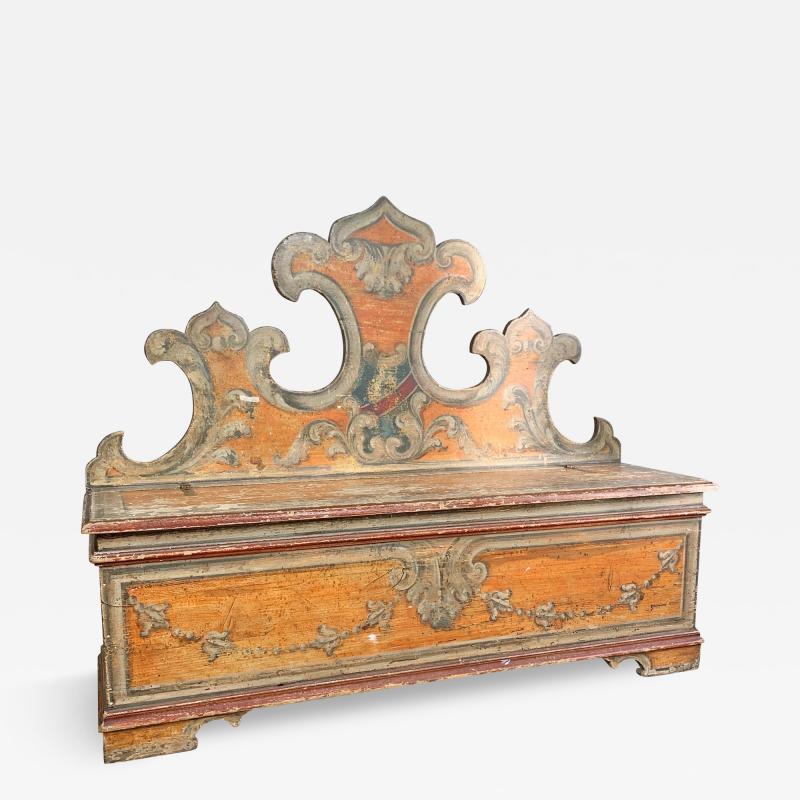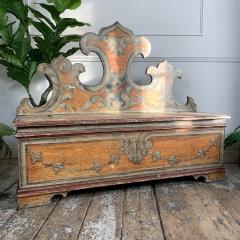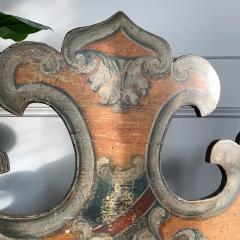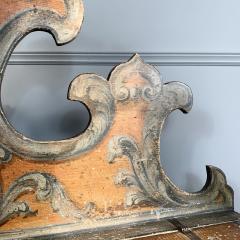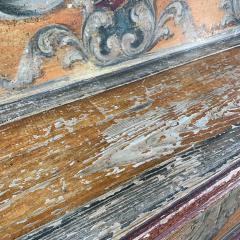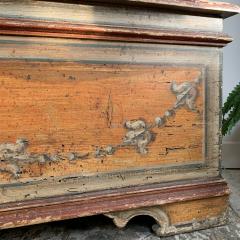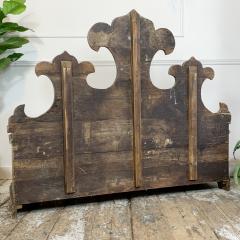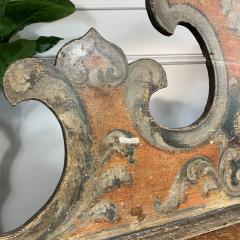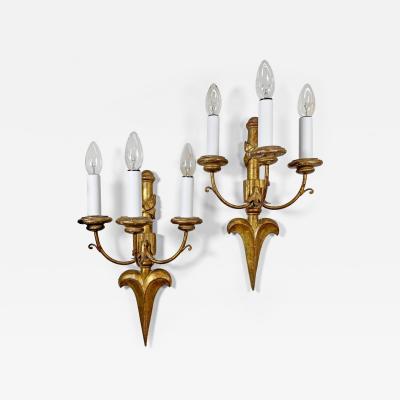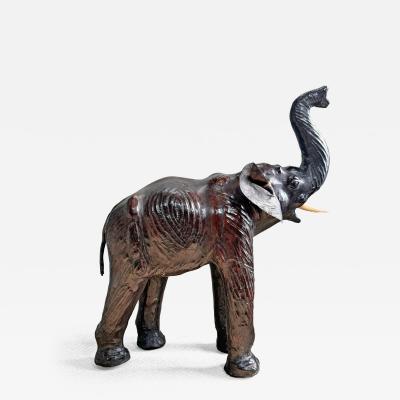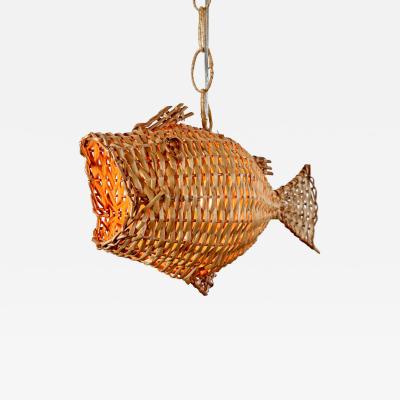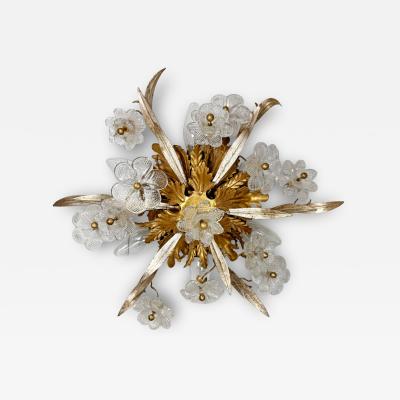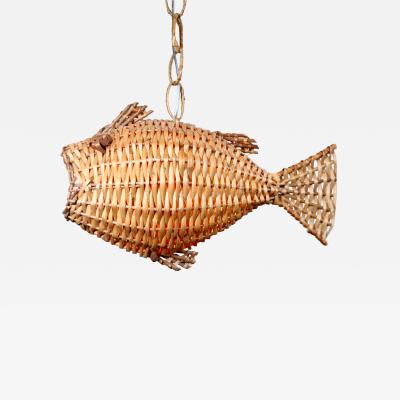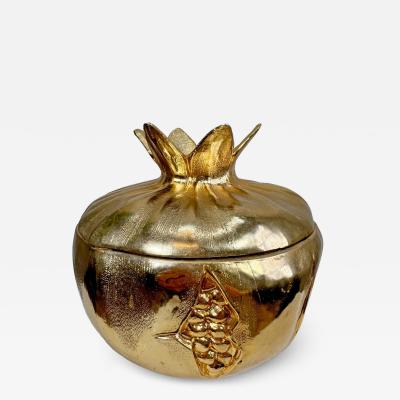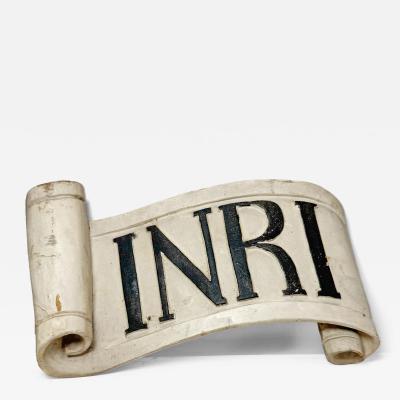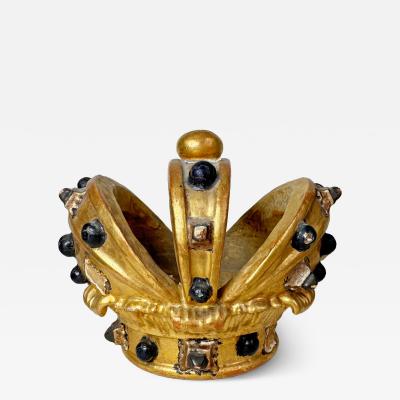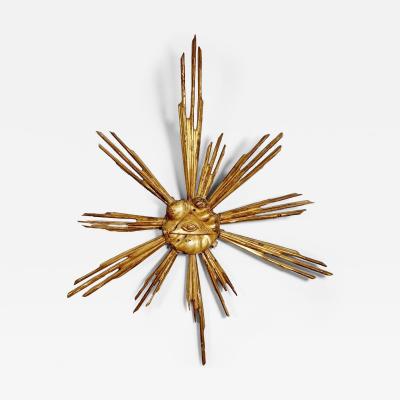18th Century Italian Painted Cassapanca Bench
-
Description
A wonderful 18th Century Italian Cassapanca, the tall back is carved as Florentine fleur de lis, and the seat and back have hand painted decoration, depicting more fleur de lis, acanthus leaves, tromp l'oeil and the crest of the Florentine family that commissioned the piece in the 1700's.
The Cassapanca is structurally in very good condition, and the paintwork is still bright, with signs of the expected wear such a piece would bear after 250 years. The folding top to the seated area still has the original iron hinges.
These are extremely hard to come across, particularly of this age and in such good condition, this Cassapanca is of a very usable size.
Cassapanca History
When a cassone or "large chest" belonging to rich Italian merchants and aristocrats in the Late Middle Ages was provided with a high paneled back, it evolved into a cassapanca, "chest-bench", which was the forerunner of the sofa. The Italian Renaissance painted cassapanca, while functioning as piece of furniture, was also a canvas for the exuberant decoration of painters from the Baroque era. These artists would cover the entire surface of the bench and back panel with crests, legendary figures and trompe-l’oeil, French for "fool the eye". Sometimes called illusionist furniture, this style of painted furniture dates back to the early Renaissance where ceilings, walls, and even furniture was painted to portray three dimensional architectural and sculptural elements.
Width 129cm x Height 105cm x Depth 36.5cm
Seat Height 43.5cm. Height of Back 61.5cm. - More Information
-
Dimensions
W. 50.79 in; H. 41.34 in; D. 14.37 in; W. 129 cm; H. 105 cm; D. 36.5 cm;
Shipping Information:
We ship worldwide, so please do get in touch for a bespoke quote for delivery to your location.
Message from Seller:
Based in East Sussex, England, LCT Home specializes in sourcing extraordinary European and British heritage antique furniture, designer lighting, and objet d'art from the 17th to 20th centuries, offering rare pieces to top interior designers and clients worldwide. With a passion for exceptional craftsmanship, LCT Home delivers luxurious statement pieces that exude glamour and timeless style, shipping globally. Contact: 07747 791640 | enquiries@lcthome.com |















